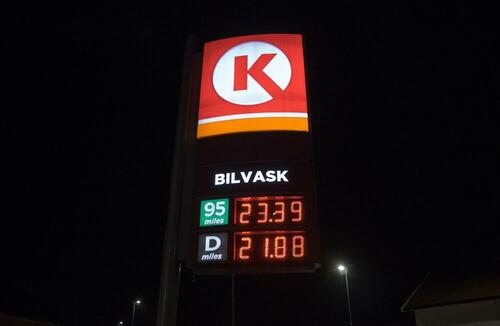If we are to achieve the climate goals for a combined transport sector on land, air and at sea, strong measures are needed. In 2023 emissions from the entire transport sector must be 55 per cent lower than it was in 1990. For emissions from 2021, this means a full 65 per cent reduction. Therefore, very ambitious technological development and a high mixing of biofuel is needed. In addition, there must be far higher costs linked to the use of cars and planes, as well as increased investment in public transport.
This is the main findings in a new TØI report. TØI, togehter with the Norwegian Public Roads Administration, has made calculations of future transport volumes and CO2 emissions in two "climate trajectories", which are constructed scenarios in which the climate targets are met. In the two climate trajectories, measures are taken as a basis to reduce transport activity, while at the same time an optimistic phasing-in rate for zero-emission vehicles and a high use of biofuel is assumed.
Powerful measures, demanding to implement in practice
Example (Klimabane) 1 requires higher costs for car use in the form of higher fuel prices, higher parking costs, removal of electric car benefits in toll rings, as well as road pricing in several urban areas (10 urban areas in example 1a, 14 in 1b). Flying will also be more expensive, as ticket prices are increased. In example 2, the fuel price is increased further, while the public transport service is improved through increased frequency and lower ticket prices.
These measures, in the form of sharp price increases for transport, and what is required by technological development and bio-mixing, will be demanding to implement in practice. There is also great uncertainty connected to the calculations of traffic development, as well as the potential for such rapid technological development and access to biofuel.
The calculations have been made in connection with the transport companies' work to prepare development trajectories for the transport sector that enable the achievement of set climate goals for 2030. The report highlights how alternative development trajectories towards 2060 can be compatible with the climate targets for 2030 and 2050, and the Zero-Growth Goal in urban areas.
Projections in development for passenger and freight transport
In 2022, projections were also designed for development in passenger and goods transport by 2060 and meant as a basis for use in the work towards a new National Transport Plan 2025-2036. The work on the person projections was carried out by the Transport Economics Institute (TØI) in collaboration with the Norwegian Road Administration and is documented in the TØI report 1926/2022 (Madslien and Steinsland, 2022). The freight transport projections are documented in the TØI report 1918/2022 (Madslien, Hovi and Hansen, 2022).
This report has been prepared on behalf of the inter-agency working group for transport analyzes and social economy "NTP Transport analysis and social economy", consisting of the transport companies National Roads, the Norwegian Railway Directorate, the Coastal Administration, Nye Veier AS, Bane NOR and Avinor.






